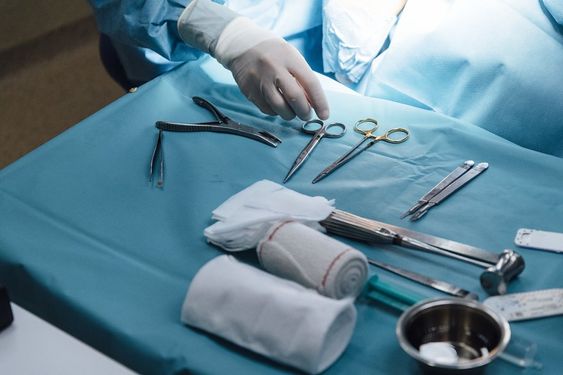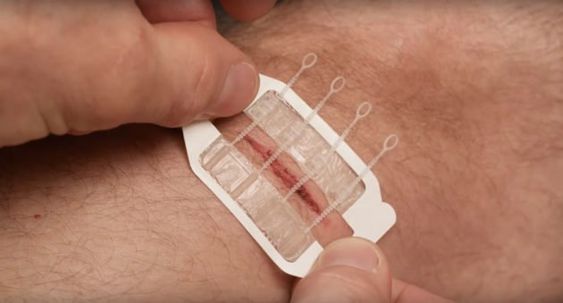When the skin is injured by a cut or tear, cosmetic suturing is an ideal option to minimize scarring after healing. Cosmetic suturing not only focuses on the functional repair of the wound but also pays more attention to the aesthetic effect. In order to achieve the healing effect and minimal scarring, postoperative care is essential. Here are some key care steps to help you achieve the recovery effect after cosmetic suturing.

What are cosmetic sutures?
Cosmetic suturing is a delicate surgical technique that uses very fine suture material and a special stitching technique to close the wound. This method is designed to reduce skin tension and promote a smoother healing process, thereby reducing scarring.
How can I take care of it to minimize scars?
Phase 1: Dressing change before stitches are removed (from the day after suture surgery to the day of stitches removal)
1. First, gently remove the dressing and tension-reducing tape covering the wound, then spray the liquid dressing on the wound, and after fully moistening it, gently wipe the wound with a sterile cotton swab (or wipe it with a cotton swab dipped in saline), remove the blood scab and residual ointment on the wound, and finally dry the wound with a dry cotton swab.
2. Use a cotton swab to apply a thin layer of erythromycin ointment on the wound. The purpose of this step is to achieve moist healing while avoiding scabs (bacteria easily accumulate under scabs).
3. Finally, reapply the tension-reducing tape. Starting from the third day after surgery, it is no longer necessary to cover with gauze or other dressings. Change the dressing 1-2 times a day.
Phase 2: From the day of stitches removal to two days after the stitches removal
1. Generally speaking, stitches are removed on the head and face for 5-7 days, on the limbs for 10-12 days, and on the joints for 14 days. The specific time varies from person to person, just follow the doctor's advice.
2. There may be a small amount of bleeding on the day of stitches removal, and continue to change the dressing as before for two days until complete healing and scab removal.
3. Scar cream and scar patch must not be used if the wound is not completely healed or scabbing off, as this will affect wound healing!
Phase 3: two days to six months after suture removal
1. The wound is completely healed in six months and enters the scar hyperplasia stage. At this stage, tension reduction + scar patch are required. Among them, tension reduction lasts for two months after surgery, and scar cream or scar patches are continuously applied for six months.
2. Use of scar cream: squeeze an appropriate amount of gel onto the wound, spread it evenly with your hands, and wait for about 10 minutes for the gel to air dry; apply it every 4-5 hours.
3. Use of scar patch:
cut the scar patch into small pieces, the size of which is just enough to cover the wound, and apply it for more than 12 hours a day. Each small patch can be used repeatedly for one week. If the viscosity becomes worse, it can be washed with clean water and dried before continuing to use.
4. If rash or itching occurs after use, stop using it for 1-2 days before using it again.

Proper care after cosmetic sutures is essential to minimize scarring. With careful care and following the advice of a professional physician, you can promote healing and reduce the impact of scarring. Remember, everyone's healing process is unique, and patience and proper care are key to achieving the results. By taking the care steps above, you can achieve better recovery after cosmetic sutures and keep scars as small as possible.
For more information on Innomed® Wound Skin Closure, Refer to the Previous Articles. If you have customized needs, you are welcome to contact us; You Wholeheartedly. At longterm medical, we transform this data by Innovating and Developing Products that Make Life easier for those who need loving care.
Editor: kiki Jia

 English
English عربى
عربى Español
Español русский
русский 中文简体
中文简体








